Thimbleberry the Thornless Bramble
This Rubus wonder, known as the Thimbleberry, is plentiful in the higher elevations of Western Montana. Rubus parviflorus is a sister to the more familiar Raspberry – Rubus idaeus. Thimbleberries & Raspberries love a lush loamy soil with a bit of shade to flourish. These two sisters can be found growing side by side, and in fact, we see them together up at our beloved yurt in the late summer months. The yurt sits at about 5200 feet elevation. On walks in the woods, in late July and August it is easy to find raspberry and thimbleberry snacks, unless our forest friends get to them first.
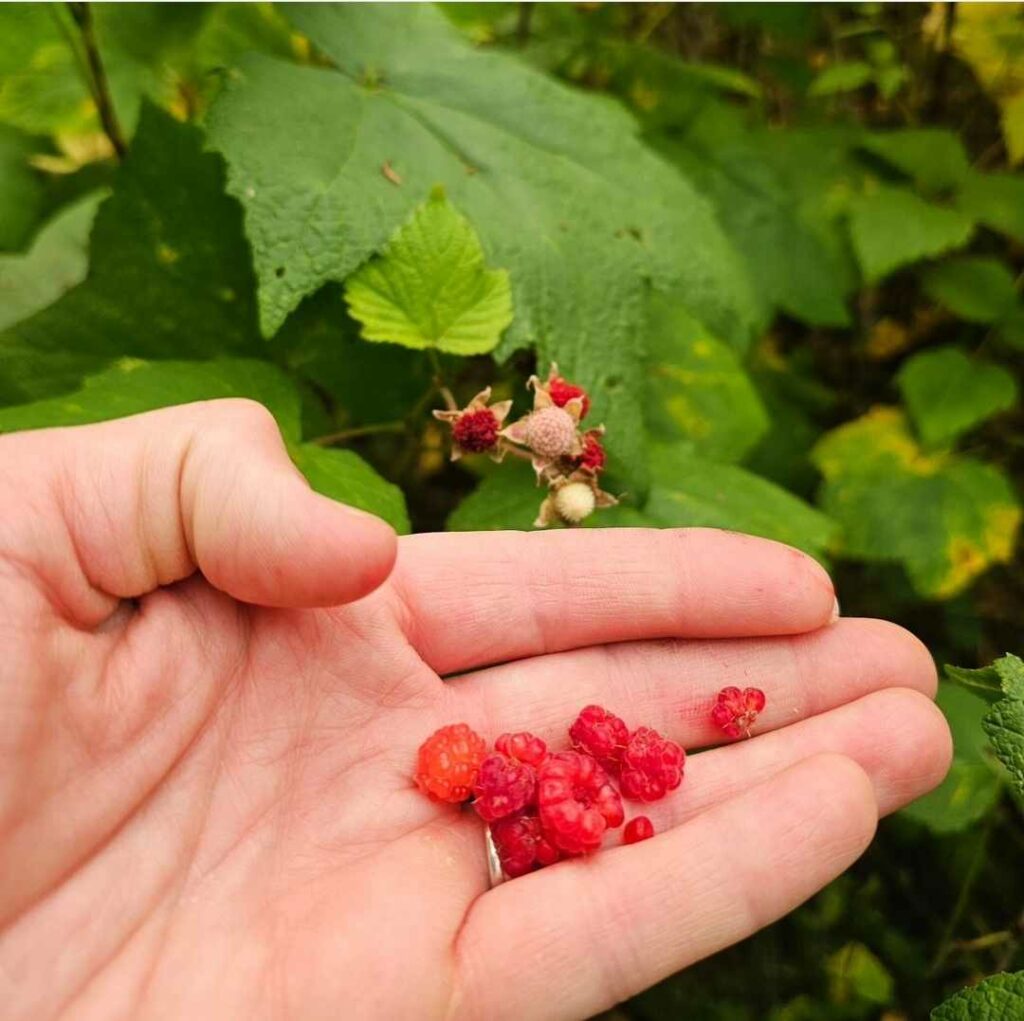
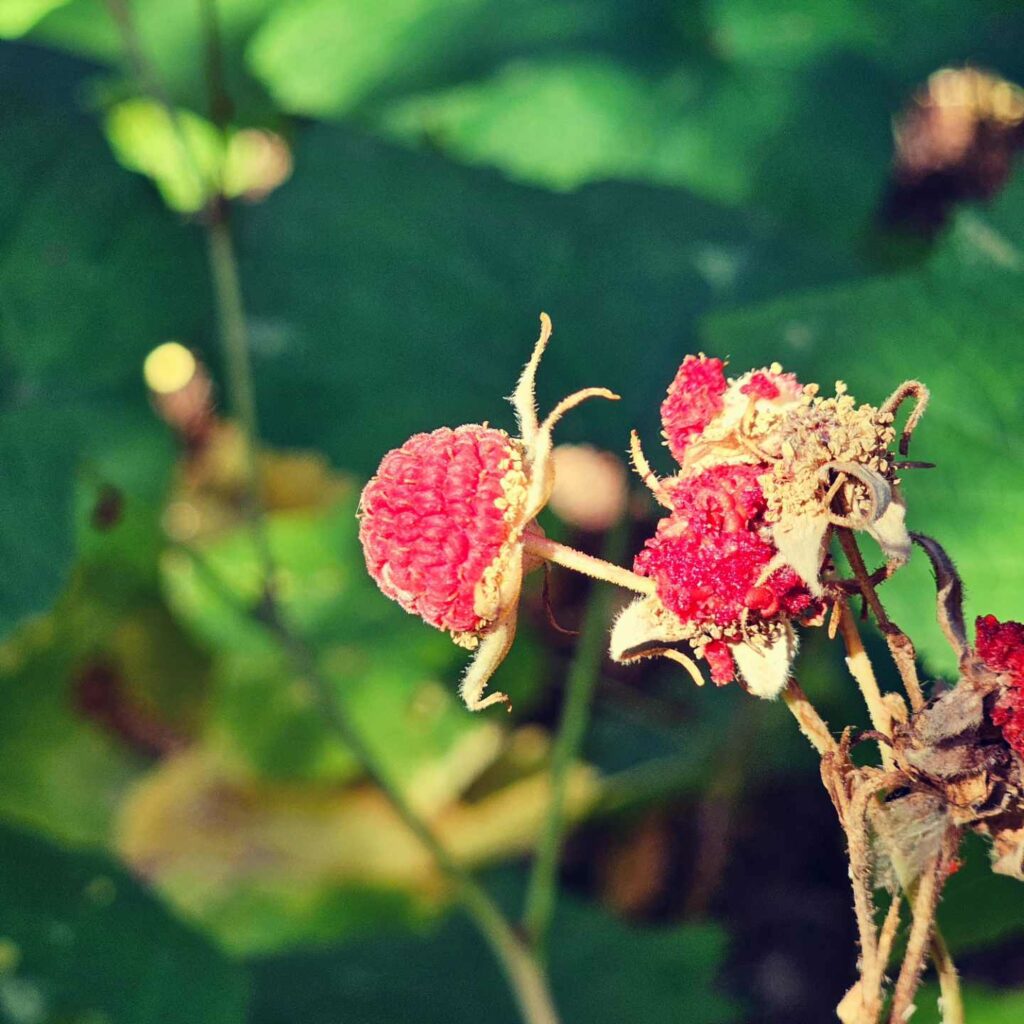
It’s hard for me to discuss one of these plants, without the other, and if we lived a bit further west, I’m sure it would be hard to discuss these two without a third – Blackberries – Rubus fruticosus (we saw this bramble ALL over Ireland when we visited this summer – before the fruit was ripe). Blackberries are found all over Washington and Oregon. These Rubus sisters (and more) are a genus in the Rosaceae family, or the rose family. To delve a bit deeper into Rubus – check the wiki – it is bonkers!
Identifying the Plants
For the purpose of this profile, I’ll stay focused on Thimbleberry and Raspberry. These gems are edible perennials full of vitamins C and A. The leaves of the Thimbleberry resemble maple leaves and are much larger than the leaves of the Raspberry. Thimbleberry leaves are five-lobed and a bit fuzzy. Thimbleberry leaves can be gigantic!
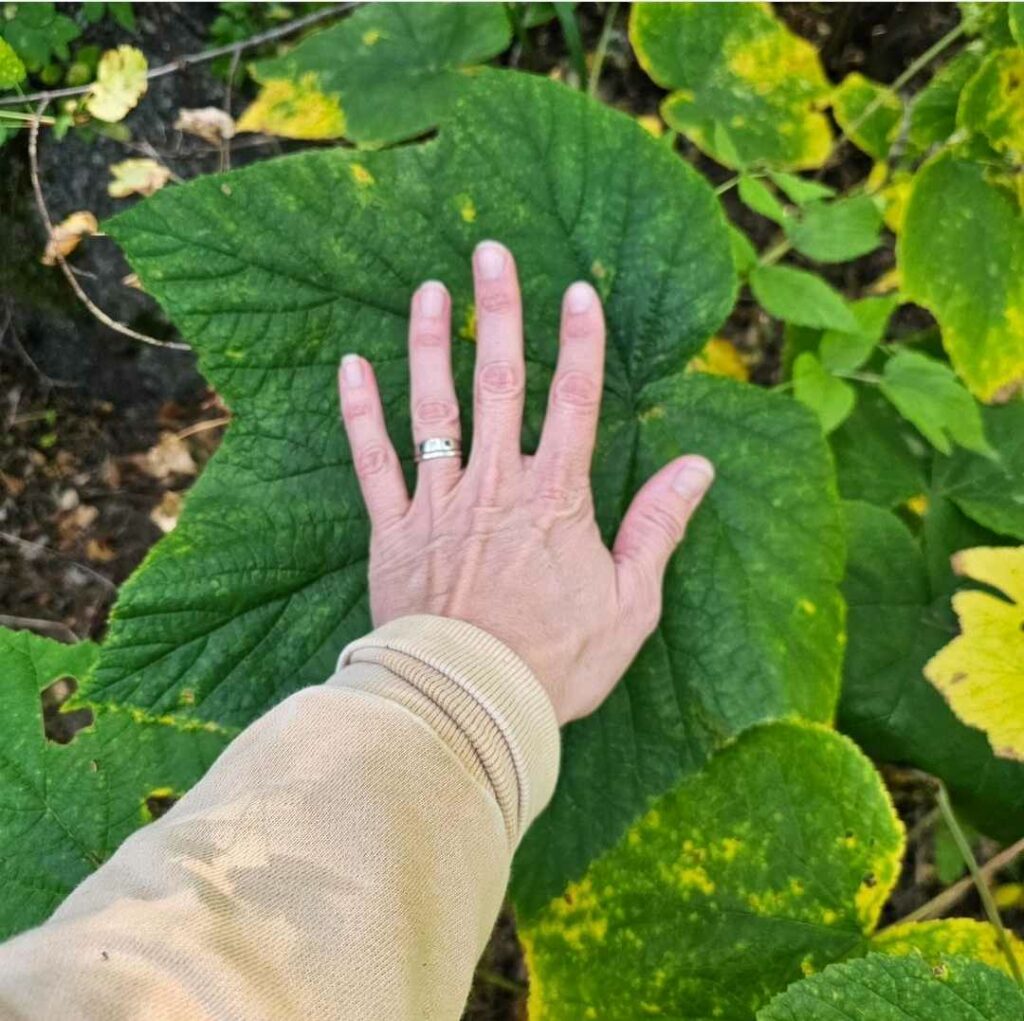
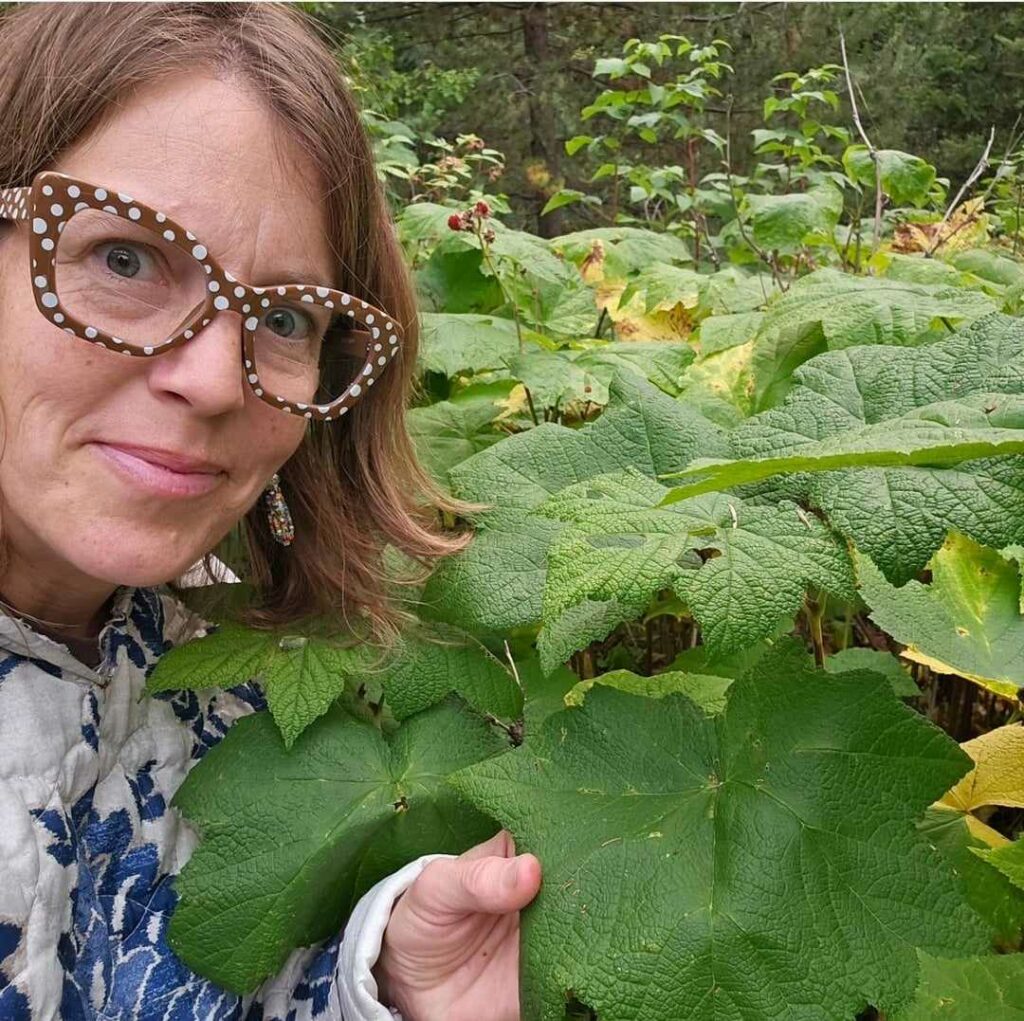
The leaves from both plants can be dried and made into a yummy tea. The leaves can also be used fresh, but there is an ‘in between’ while the leaves are drying that they can release a toxin, so it is best to not drink an infusion from them during that interim. Thimbleberries also have no thorns on their stems, unlike their sister plants the raspberry & blackberry.
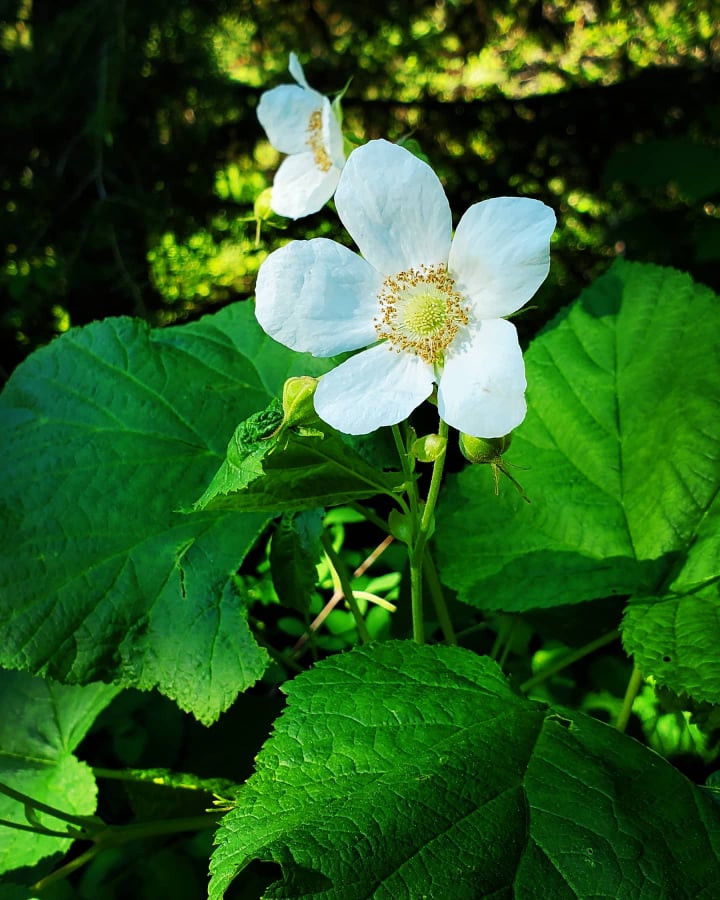
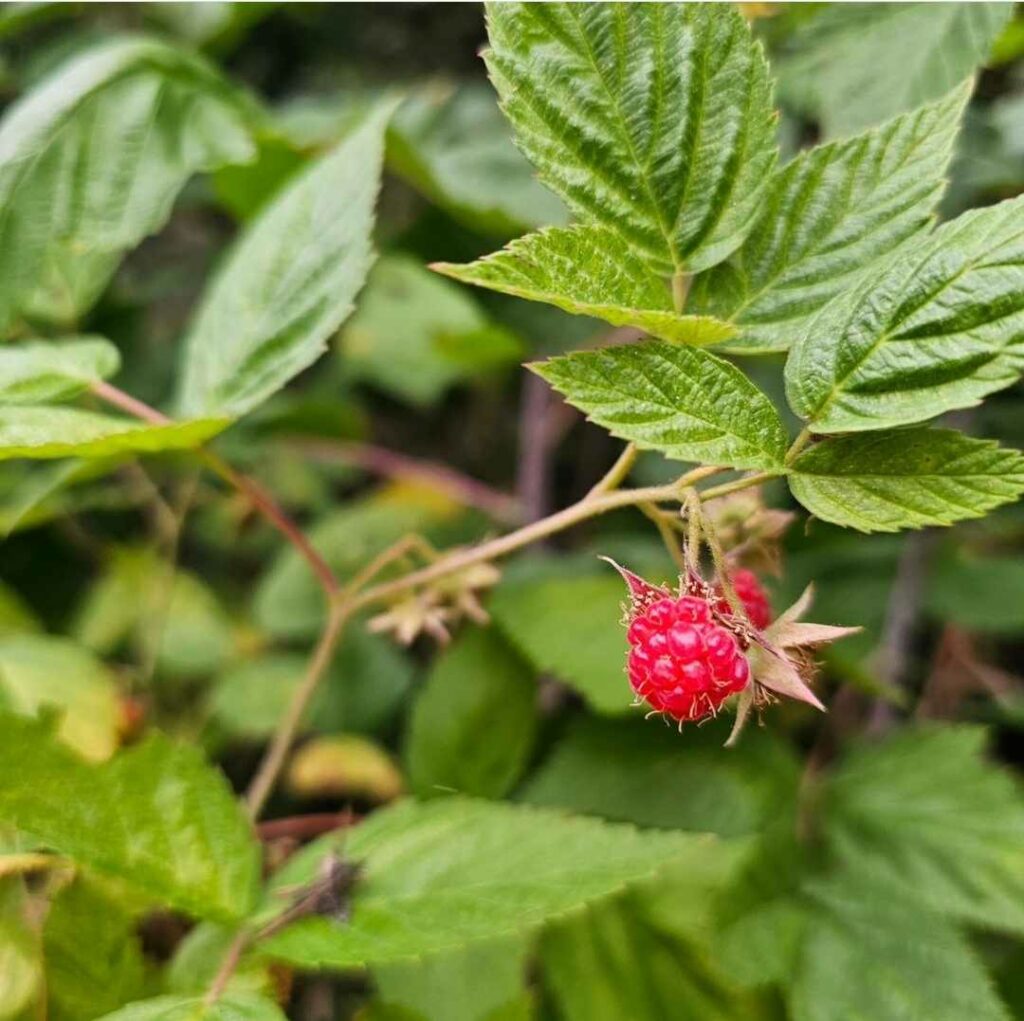
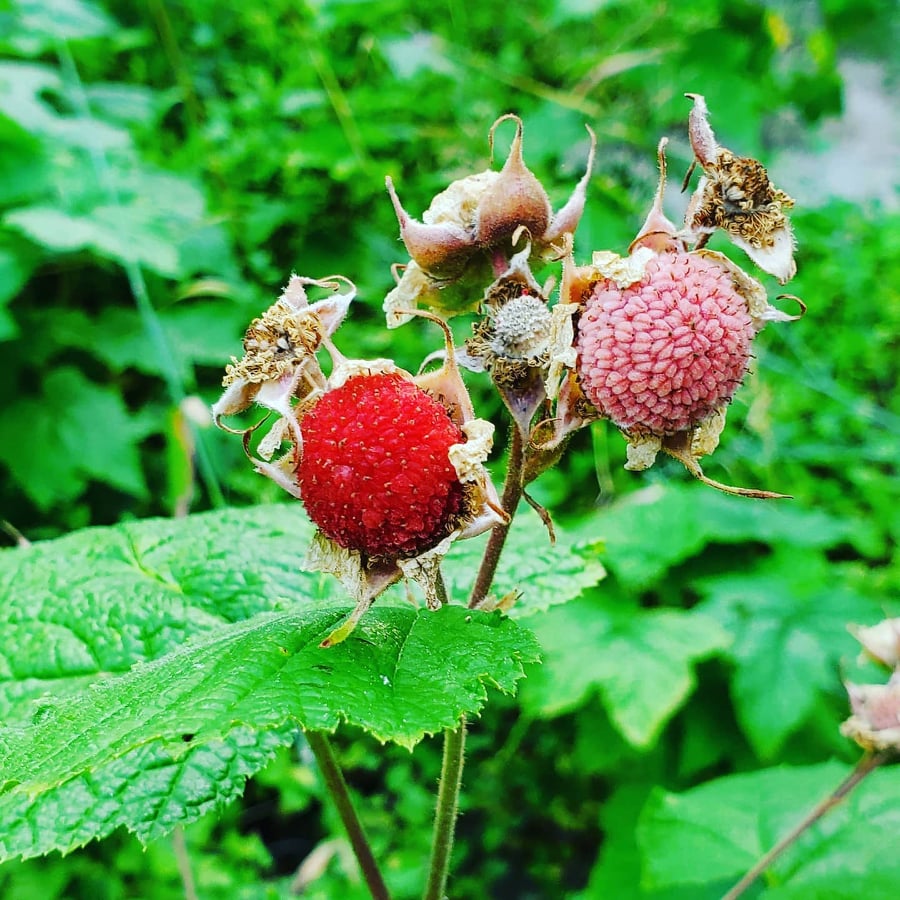
The flower of Thimbleberry, before they turn to fruit resembles a strawberry significantly. The berry (which actually isn’t an official berry, when ripe resembles the Raspberry. The fruit surrounds a core and can be removed intact, when picked. The part that is pulled from the core is a bit more fragile than a raspberry, but some may say it resembles a thimble or cap. One of the nicknames for Thimbleberries is redcaps.
Herbal Actions/Uses
Raspberry is a FOOD & the plants are very nutritive. In fact when I work as a doula with pregnant and postpartum mamas I ALWAYS recommend raspberry leaf tea. This plant can strengthen the uterus in preparation for birth, especially if an infusion is taken regularly. Raspberry is also an astringent and can tighten tissues, so she is a very useful plant postpartum for healing. Raspberry is a lovely infusion for anyone but the reproductive system of a female type body benefits immensely.
The leaves of the raspberry and thimbleberry contain calcium, iron and vitamin C. And, Thimbleberry is an anti-emetic and stomachic. Native Americans historically used Thimbleberry leaves and roots for digestive tract ailments such as nausea, vomiting, and diarrhea.
The dried leaves have historically been used as a poultice to heal skin disturbance and even acne. Thimbleberry can also be a beneficial tool when working to heal the mouth and gums.
What we use Thimbleberry & Raspberry for in our family
I drink the tea regularly to support my reproductive system. Raspberry leaf tea is actually one of my favorite teas, because it tastes so good.
These plants can mostly be used interchangeably, although you likely won’t find a Thimbleberry tea in the store. If you do, send me a picture.
We eat all the berries on walks in the woods – Thimbleberry, Raspberry, Saskatoon, Huckleberry, etc!
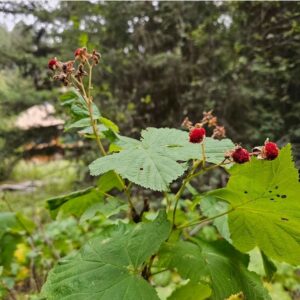
And, one day, when I’m able to spend more time at the yurt, I will make a Thimbleberry pie. I might have to add some raspberries just to fill the pan.
Meet Thimbleberry, IRL
Until we meet again. xo
